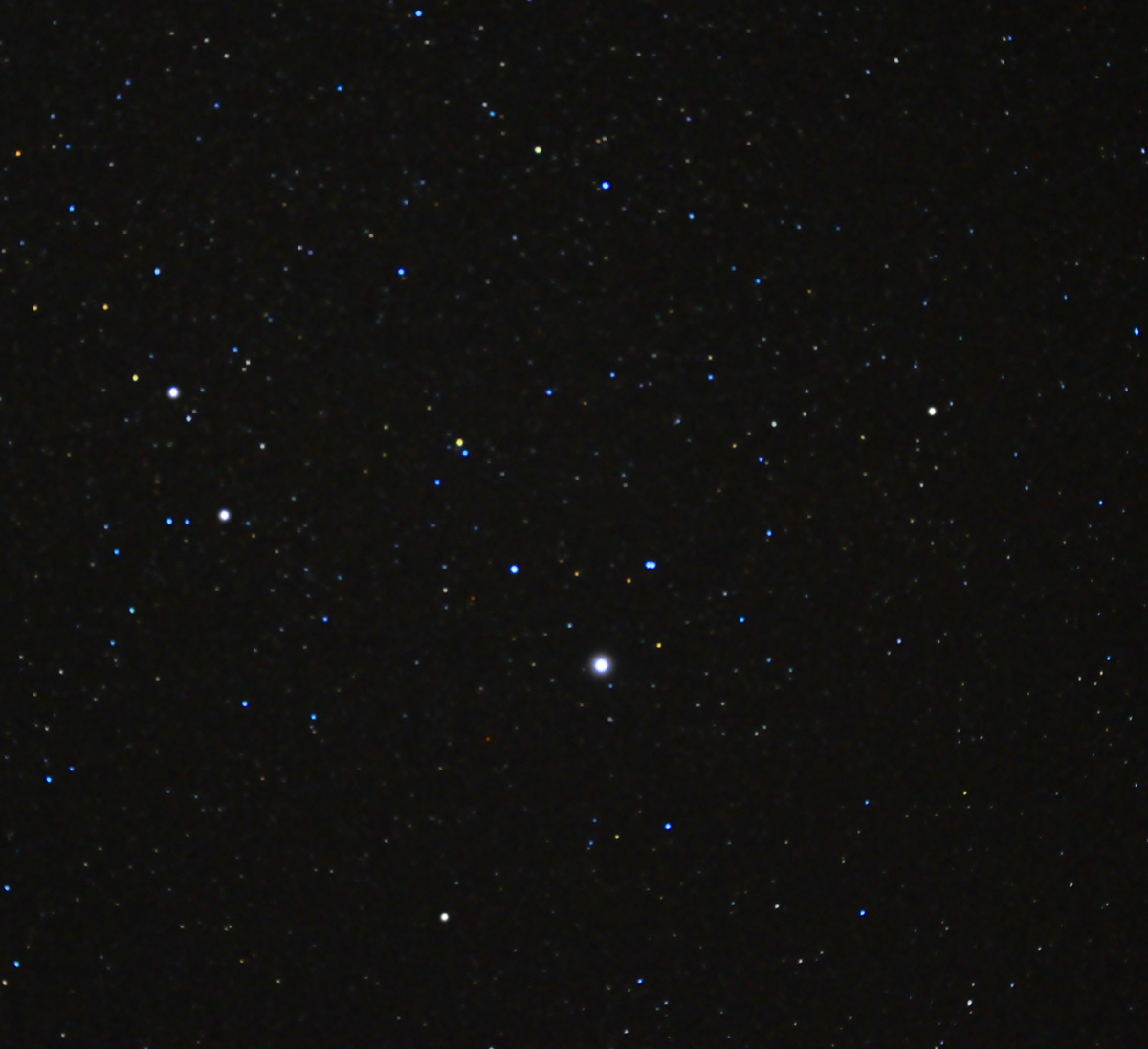Lyra
Lyra is one of the smaller constellations in the sky but is easily located due to its containing zero magnitude Vega, the 5th brightest star in the sky. Vega is twice the size of our sun, 37 times as bright, and lies at a distance of 25 light years. It is interesting to note that due to our planet's axial precession, Vega was the pole star in 12,000 B.C. and it will be again in the year 13,727. Vega rotates every 12 1/2 hours, giving it a pronounced equatorial bulge. It is believed that it possesses at least one planet but this has not as yet been confirmed. Sulafat is a type A star lying at a distance of about 635 light years and Sheliak is a very close eclipsing binary system made up of a type B primary star and a secondary that is probably also a B-type star. The brighter, less massive star in the system has filled its Roche lobe and is undergoing mass transfer with the other star due to its evolutionary state. The secondary, more massive star has an accretion disk due to this mass transfer which blocks our view of the secondary star, making it difficult for astronomers to pinpoint what its stellar type is. Epsilon Lyra is a beautiful quadruple star, consisting of a wide binary pair that can be easily seen in binoculars (and shows as double in my photo here) each of which is also binary but requires a moderately large telescope to separate. Lyra is also home to M57, the famous planetary nebula, a lovely sight in a telescope but too faint to show up in my photo below.
 |